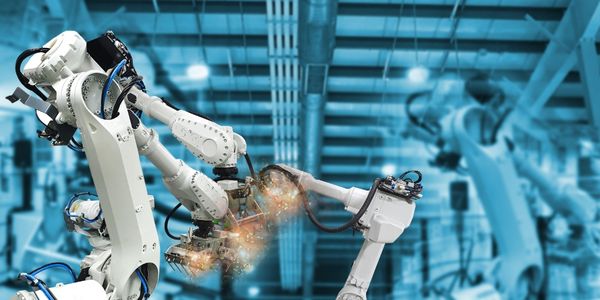Applicable Industries
- Equipment & Machinery
- Packaging
Applicable Functions
- Product Research & Development
Use Cases
- Structural Health Monitoring
- Time Sensitive Networking
About The Customer
Robopac is a company of Aetnagroup and is recognized as the global leader in the stretch wrapping industry. The company specializes in the design and manufacture of semi-automatic and automatic stretch wrapping equipment. Robopac combines technology, innovation, and experience to deliver products that offer reliable results. Aetnagroup’s seven brands — Robopac, Robopac Sistemi, Dimac, Prasmatic, IMSB, Rotac, and Toptier — offer complete lines of innovative stretch wrapping systems, bundlers, shrink wrappers, boxing systems, and tape machines. The company is based in San Marino and operates in the packaging industry.
The Challenge
Robopac, a leading designer and manufacturer of stretch wrapping machines, was facing a significant challenge with its existing product, Rotowrap. The product was constructed as a metal box with numerous welding seams, which posed potential reliability issues during the rotation of the wrapping arm. The complex design of the Rotowrap was also more costly than competitors’ products. The company was under pressure to develop a new product that was of higher quality, performance, and reliability, but at a lower cost. The challenge was not only to innovate but also to ensure that the new product was more durable and less costly than the existing one to maintain competitiveness in the industry.
The Solution
To overcome the challenge, Robopac engineers turned to ANSYS solutions to explore the design space and focus on structural robustness. They used ANSYS Mechanical for both static and dynamic analysis and ANSYS SpaceClaim to model geometries for product design optimization. This approach allowed them to significantly improve the structural strength of the new wrapping machine by substituting metal tubes for the welded metal plates. The result was closed structures that have more resistance to twisting forces. Transient analysis enabled them to calculate forces and torques during machine start-up and emergency stopping — both critical phases for mechanical stress — especially near welding seams. This innovative approach led to the development of a more robust and productive stretch wrapping machine in a shorter time and at a lower cost.
Operational Impact
Quantitative Benefit

Case Study missing?
Start adding your own!
Register with your work email and create a new case study profile for your business.
Related Case Studies.

Case Study
Smart Water Filtration Systems
Before working with Ayla Networks, Ozner was already using cloud connectivity to identify and solve water-filtration system malfunctions as well as to monitor filter cartridges for replacements.But, in June 2015, Ozner executives talked with Ayla about how the company might further improve its water systems with IoT technology. They liked what they heard from Ayla, but the executives needed to be sure that Ayla’s Agile IoT Platform provided the security and reliability Ozner required.

Case Study
IoT enabled Fleet Management with MindSphere
In view of growing competition, Gämmerler had a strong need to remain competitive via process optimization, reliability and gentle handling of printed products, even at highest press speeds. In addition, a digitalization initiative also included developing a key differentiation via data-driven services offers.

Case Study
Predictive Maintenance for Industrial Chillers
For global leaders in the industrial chiller manufacturing, reliability of the entire production process is of the utmost importance. Chillers are refrigeration systems that produce ice water to provide cooling for a process or industrial application. One of those leaders sought a way to respond to asset performance issues, even before they occur. The intelligence to guarantee maximum reliability of cooling devices is embedded (pre-alarming). A pre-alarming phase means that the cooling device still works, but symptoms may appear, telling manufacturers that a failure is likely to occur in the near future. Chillers who are not internet connected at that moment, provide little insight in this pre-alarming phase.

Case Study
Premium Appliance Producer Innovates with Internet of Everything
Sub-Zero faced the largest product launch in the company’s history:It wanted to launch 60 new products as scheduled while simultaneously opening a new “greenfield” production facility, yet still adhering to stringent quality requirements and manage issues from new supply-chain partners. A the same time, it wanted to increase staff productivity time and collaboration while reducing travel and costs.

Case Study
Integration of PLC with IoT for Bosch Rexroth
The application arises from the need to monitor and anticipate the problems of one or more machines managed by a PLC. These problems, often resulting from the accumulation over time of small discrepancies, require, when they occur, ex post technical operations maintenance.

Case Study
Robot Saves Money and Time for US Custom Molding Company
Injection Technology (Itech) is a custom molder for a variety of clients that require precision plastic parts for such products as electric meter covers, dental appliance cases and spools. With 95 employees operating 23 molding machines in a 30,000 square foot plant, Itech wanted to reduce man hours and increase efficiency.



